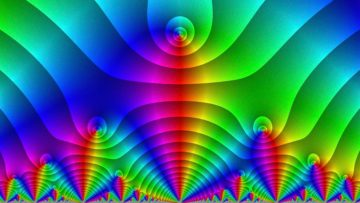Jordana Cepelewicz in Quanta:
 There are five fundamental operations in mathematics,” the German mathematician Martin Eichler supposedly said. “Addition, subtraction, multiplication, division and modular forms.”
There are five fundamental operations in mathematics,” the German mathematician Martin Eichler supposedly said. “Addition, subtraction, multiplication, division and modular forms.”
Part of the joke, of course, is that one of those is not like the others. Modular forms are much more complicated and enigmatic functions, and students don’t typically encounter them until graduate school. But “there are probably fewer areas of math where they don’t have applications than where they do,” said Don Zagier, a mathematician at the Max Planck Institute for Mathematics in Bonn, Germany. Every week, new papers extend their reach into number theory, geometry, combinatorics, topology, cryptography and even string theory.
They are often described as functions that satisfy symmetries so striking and elaborate that they shouldn’t be possible. The properties that come with those symmetries make modular forms immensely powerful. It’s what made them key players in the landmark 1994 proof of Fermat’s Last Theorem.
More here.
